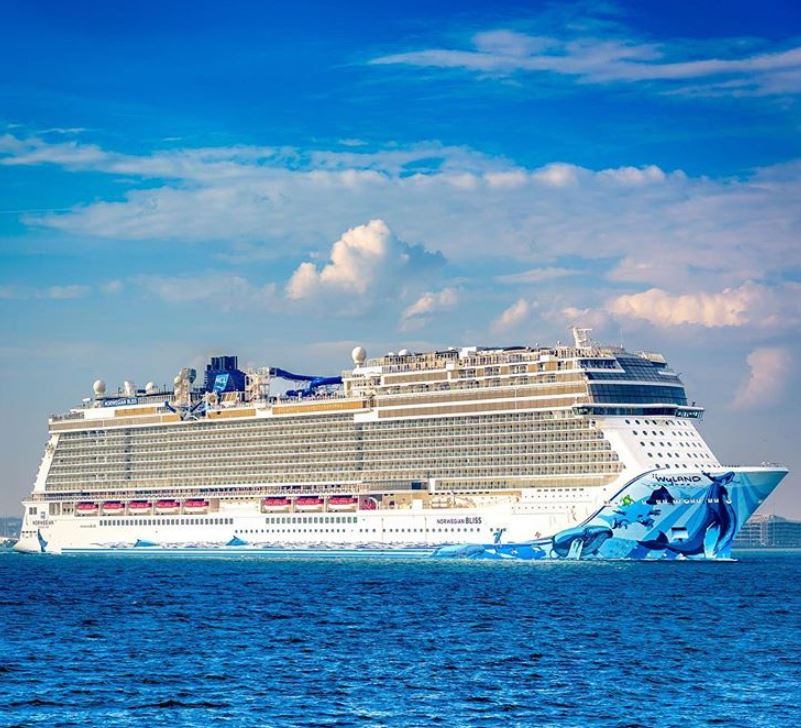Eye on Travel
Radio Guest List–Norwegian Bliss–June 9, 2018
@norwegiancruiseline Instagram
This week’s broadcast of Peter Greenberg Worldwide comes from the new Norwegian Bliss sailing out of Miami, Florida. As the U.S./North Korea summit gets closer, Peter reports on one of the unexpected, funny and fascinating travel components involved. In fact, it could be a major stumbling block during summit negotiations—who will pay for Kim Jong-un’s $6,000 a night hotel suite? (And who might cover the mini-bar charges!)–not to mention how will the North Korean leader travel to Singapore? (Hint: He can’t. Take a slow moving heavily armored train…and there are no North Korean planes that have the range to fly to Singapore nonstop). Joining Peter is Andy Stuart, President and CEO of Norwegian Cruise Line, on the little known Jones Act and how it impacts cruising and your choices of ports. Then, Frank Del Rio, President and CEO of Norwegian Cruise Line Holdings, shares where the idea to have a double-deck high race track on Norwegian Bliss was hatched. And a look at the rapidly changing behavioral and age stats of cruise ship passengers from Tom Steighorst of Travel Weekly. There’s all this and more as Peter Greenberg Worldwide broadcasts from NCL’s Norwegian Bliss.
Click here to listen to the show streaming from 10 a.m. until 1 p.m. ET on Saturday, May 19, 2018.
Have a travel question? Ask Peter. Call 888-88-PETER (888-88-383), email him at peter@petergreenberg.com, or tweet your questions to @PeterSGreenberg (include #AskPeter).
Andy Stuart, President and CEO of Norwegian Cruise Line, talks about how he and his team are thinking outside of the box in terms of their itineraries and how the seemingly restrictive Jones Act, which regulates maritime commerce in the United States, actually helps with innovation. Bahamas, Belize and Australia are just a few of the cruise line’s upcoming destinations. He then discusses a new concept that started in Hawaii. Now, Norwegian Cruise Line’s cruise ships spend two days in every major destination, which allows people to experience nightlife. Stuart also explains that cruising is an extremely safe vacation because if there is a threat, the ship can just move somewhere else.
Frank Del Rio, the President and CEO of Norwegian Cruise Line Holdings, discusses how all cruise ships are getting bigger in order to compete with land-based resorts in terms of space and fantastic amenities. Norwegian Bliss, for example, features a 1,000-foot long double-deck race track, where 10 cars can race at 35 miles per hour. He also reveals the cruise ship’s most popular destination.
Tom Steighorst, Senior Editor for Travel Weekly, shares that one of the best things about cruise ships is that you can bring three generations or more together on one cruise and how there can be something for everyone to enjoy. He also talks about how you can find superb quality food from all over the world on board.
Karl Staffan Bengtsson, Captain of Norwegian Bliss, shares how he became a captain and what happened with the traditional ship’s steering wheel. He also reveals his biggest surprise about the Norwegian Bliss and how it soon will become the largest cruise ship to ever pass through the Panama Canal.
Bill Panoff, Chairman & CEO of PPIGroup and Editor-in-Chief of Porthole Cruise Magazine, explains why the entertainment is something that impresses him the most on the Norwegian Bliss. Despite the enormous amount of people, there are no lines on the ship because there are so many venues to visit. He also explains why the ships are becoming a destination rather than transportation. He then shares his favorite place that Porthole Cruise Magazine has covered.
Silas Cook, Cruise Director of Norwegian Cruise Line, discusses what used to be big on cruise ships but not anymore and reveals which old game is still a huge deal. He also talks about the technicality behind the theater stage on Norwegian Bliss that makes it possible to change scenes in three seconds.
Simon Murray, Senior Director of Guest Services and Innovations at Norwegian Cruise Line, shares more on the mechanics behind the race track. Although it’s thrilling, it also has to be very safe. The speed limit is 30 miles per hour, and a speaker is built into the car that gives the driver an illusion of a very high speed.
By Alisa Sokolova for PeterGreenberg.com








